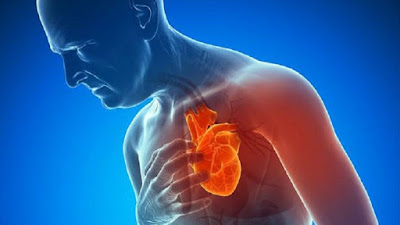One Month Before Stroke Your Body Will Send You These Warning Signs
According to the latest statistics, the medical experts say that strokes are a leading cause of adult disability and the fourth leading cause of death in the U.S. It is a “brain attack” that occurs when blood flow to a part of brain is interrupted. In this article we are going to talk about strokes, the most common warning signs and how to protect yourself. First, you should know that there are 2 major types of strokes: ischemic and hemorrhagic. Ischemic strokes are more common and are caused by a narrowing or blocking of arteries to the brain, resulting in severely reduced blood flow. Hemorrhagic strokes are less common and are caused by bleeding in the brain.

Note: you should know that it’s extremely important to identify the warning signs of a stroke and get medical help as soon as possible to reduce the risk of serious damage to the brain. This can help lower the risk of death or disability and improve your chances of recovery. The medical experts say that the signs and symptoms may vary from one person to another depending on the type of stroke, the part of the brain affected and the extent of damage. But they all tend to begin suddenly.
The most common warning signs of a stroke are:
- Numbness in your arm, leg or face, especially on one side of the body
- Trouble walking, loss of balance or coordination
- Trouble speaking and understanding others who are speaking
- To help recognize the onset of a stroke, remember the F.A.S.T. acronym.
- Face – you should ask the person to smile and check if one side of their face droops.
- Arms – you should ask the person to raise both arms and check if either of their arms drift downward.
- Speech – you should ask the person to repeat a simple phrase and check if their speech is slurry or strange.
- Time – this is extremely important for you to remember: every minute counts. If you observe even one of these signs, you should call an ambulance immediately. Moreover, some treatments for stroke work only if administered within 3 to 4 hours of the onset of symptoms.
Other possible signs and symptoms include:
- Trouble seeing in one or both eyes
- Sudden severe headache with no known cause
- Dizziness
- Complete paralysis
You should also remember that stroke strikes fast and the symptoms come on suddenly. So, if you have one or more warning signs of a stroke for more than a few minutes, don’t wait for the symptoms to improve or worsen. Seek medical help right away. Note: it’s much better to call an ambulance than drive yourself or letting someone else drive you to the hospital. In the ambulance, medical personnel can begin life-saving treatment on the way.
And you should go to a hospital even if the symptoms occur for a few moments and then disappear. These brief episodes are known as transient ischemic attacks (TIAs) and may put you at a higher risk of a full stroke in the near future.
Subtle Differences Between Stroke and Migraine Symptoms
The medical experts say that sometimes, a stroke or TIA symptoms may be confused with migraine aura symptoms. In such cases, remember:
- Symptoms of a stroke or TIA are sudden, whereas migraine aura symptoms develop slowly and then spread and intensify.
- Migraine symptoms tend to be positive and you experience additional stimuli, such as seeing flashing lights and zigzag shapes. On the other hand, stroke or TIA symptoms typically begin with negative symptoms, such as loss of vision, hearing, sensation or limb power.
Risk Factors
As we said, stroke can strike anyone at any time. These factors can increase your risk:
- Age 55 or older
- High blood pressure
- Smoking
- Diabetes
- Other conditions like heart disease, atrial fibrillation and blood disorders
- Migraines with aura, or visual disturbances
- Family history
So, in order to prevent or delay a stroke, it’s extremely important to control the risk factors. And, you should eat a healthy diet rich in a variety of fruits, vegetables and whole grains, get regular exercise and maintain a healthy weight. We really hope you find this article helpful and don’t forget to share it with your friends and family. Thank You.


